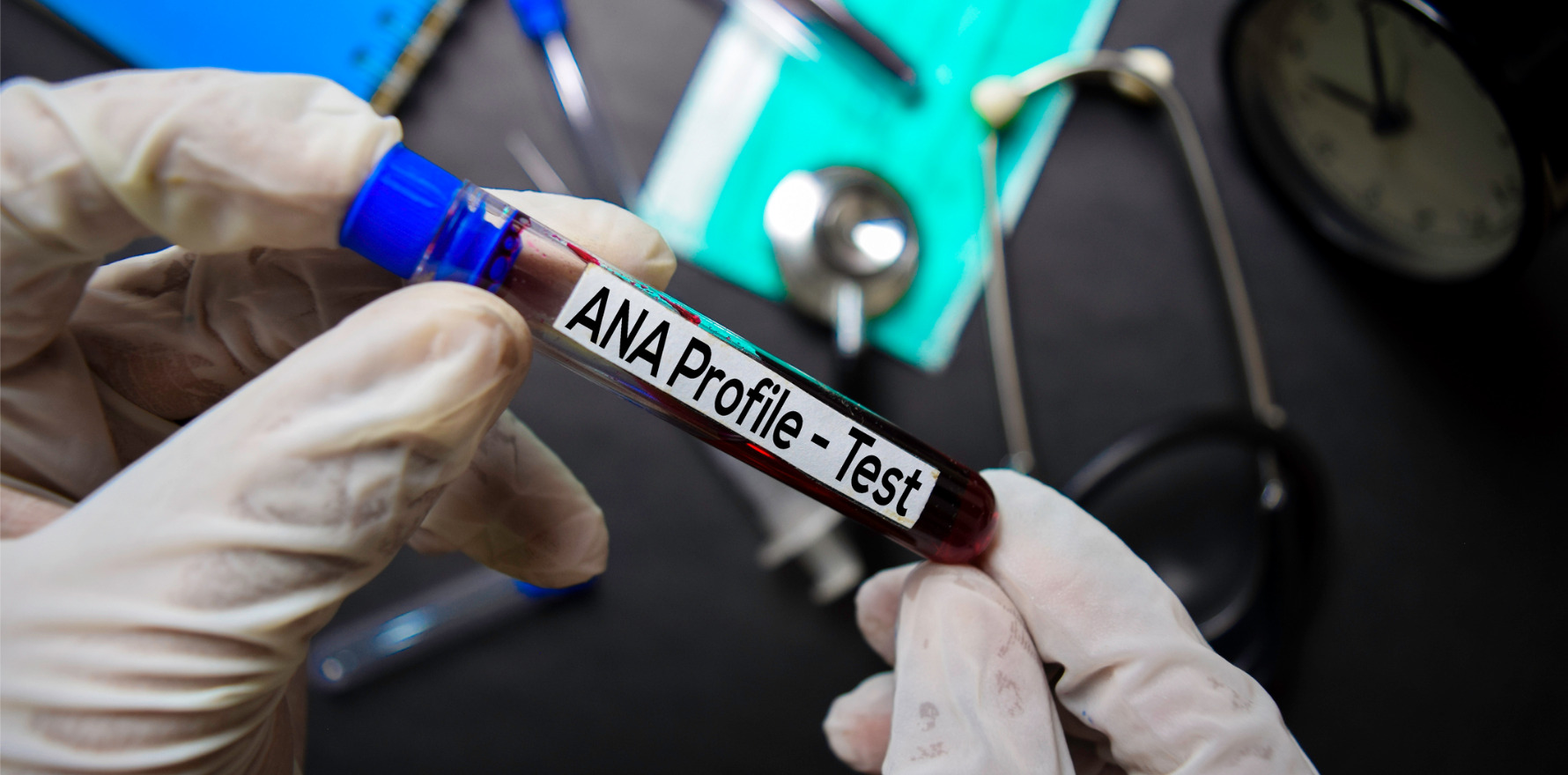Dr Andrew Jordan presents a common clinical scenario and a simple approach to management.
One of the most frequently ordered immunology tests is the anti-nuclear antibody (ANA) test. I will present some cases to illustrate when I would order the test and how I interpret the results.
The ANA is a screening test. This means a negative result virtually excludes (but not always) connective tissue disease (CTD). A positive test needs further clarification, by correlating with symptoms, signs and other autoimmune serology and investigations. A positive ANA in the wrong clinical context is unhelpful and leads to anxiety, further investigations and often specialist referral. It is thus important to order the test only when there is a reasonable probability of a CTD.
The symptoms and signs that are more suggestive of a CTD are inflammatory joint pain (which may be symmetrical or migratory), joint swelling, prolonged morning stiffness in the joints, malar rash (usually with nasolabial sparing), late-onset or severe Raynaud’s phenomenon, photosensitive rash, systemic symptoms (recurrent fevers, unexplained sweats and weight loss), oral or nasal ulceration, serositis (pericarditis and pleural effusions), patchy frontal or peripheral alopecia, lymphadenopathy, and cytopenia. This is clearly not an exhaustive list but is a helpful guide.
I ask about all of these symptoms when I am assessing someone with a suspected CTD.
The titre of ANA is also helpful. Low titres (1:160 and below) are common in the normal population (up to 1 in 10 of the normal population) and less likely to be associated with connective tissue disease. A pattern is also described with the ANA. A detailed description and disease associations for each pa ern is beyond the scope of this article, however, it is worth noting that the “dense-fine speckled pattern” is usually not pathological.
Repeating the ANA in someone with a known diagnosis is not helpful. The titre is not useful for monitoring disease activity.
Once a raised ANA has been identified, I order dsDNA, ENA, C3 and C4 levels. A raised dsDNA is present in around 70% of patients with SLE and is relatively specific for this condition. The ENA can help define the clinical phenotype as the different components of the ENA are associated with different diseases. C3 and C4 levels frequently decrease in active disease due to immune complex consumption. Contrast this with high C3 and C4 levels which occurs with any form of inflammation or infection.
Let me present some cases to tie all of this together.
Case one is a 55-year-old obese (BMI 33) female who presents with severe fatigue and aching in her neck, low back, knees and feet. She is at her worst in the evening and there is no joint swelling or significant morning stiffness. She does not have any of the symptoms of connective tissue disease detailed above.
Blood tests show ANA 1:160 homogenous pa ern but her dsDNA and ENA are negative and full blood count and complement levels are normal. This lady does not have a CTD. An ANA result like this occurs in up to 1 in 10 of the normal population and her symptoms are not suggestive of a CTD.
I would argue that an ANA should not have been ordered due to the non-specific symptoms she describes. You are now left with the situation of having to explain why the ANA result is not of concern, which can be challenging, especially with an anxious or disease-focussed patient. I would suggest her symptoms are more likely to be due to other factors such as stress, poor sleep (including obstructive sleep apnoea), mood disturbance, muscle deconditioning, early osteoarthritis or possibly metabolic / endocrinology issues.
Case two is a 29-year-old female who presents with pain and swelling in her fingers, difficulty using her hands (as she is unable to make an adequate grip), new-onset Raynaud’s phenomenon, a transient malar rash and severe fatigue. She has felt feverish at times but has never recorded her temperature.
These symptoms are concerning for a CTD and ordering an autoimmune screen is entirely appropriate. ANA is 1:1280 homogenous pattern, dsDNA is raised, ENA is positive for SSA and C3 and C4 is low. This lady has SLE and she needs to be referred to a specialist to further assess for organ involvement and to initiate treatment.
Case three is a 45-year-old female who presents with non-specific musculoskeletal pain, short duration (15 minutes) of widespread morning stiffness, fatigue and a rash on her face involving the malar and perioral region.
She was diagnosed with Hashimoto’s thyroiditis six months ago and is now on thyroid hormone replacement. ANA is 1:640 with a homogenous pattern. Other results show negative ENA, normal dsDNA, C3, C4 and full blood count.
This is a tricky situation. While she has a moderate titre ANA, a positive ANA is found in up to 50% of patients with Hashimoto’s thyroiditis. The rest of her investigations are not suggestive of a CTD. The rash on her face certainly warrants concern, however a malar rash can be due to other causes, such as rosacea.
It is possible she has a CTD in evolution or there may be other explanations for her collection of symptoms. It would be unlikely she needs treatment at this stage due to the lack of a clear diagnosis. Observation, further investigation and consideration of specialist referral would be appropriate.
Dr Andrew Jordan is a rheumatologist based in Parramatta, Sydney, with a special interest in inflammatory arthritis, gout and PRP injections.


